Disclaimer: This blog post contains affiliate links. If you make a purchase through these links, we may earn a small commission at no additional cost to you. Learn More. Thank you for supporting our garden community.
How to Grow Radishes
Growing radishes is an easy and rewarding experience for gardeners of all levels. With the right knowledge and techniques, you can grow juicy and vibrant radishes in your own backyard. In this post, we’ll cover all the essential factors required to teach you about how to grow radishes.
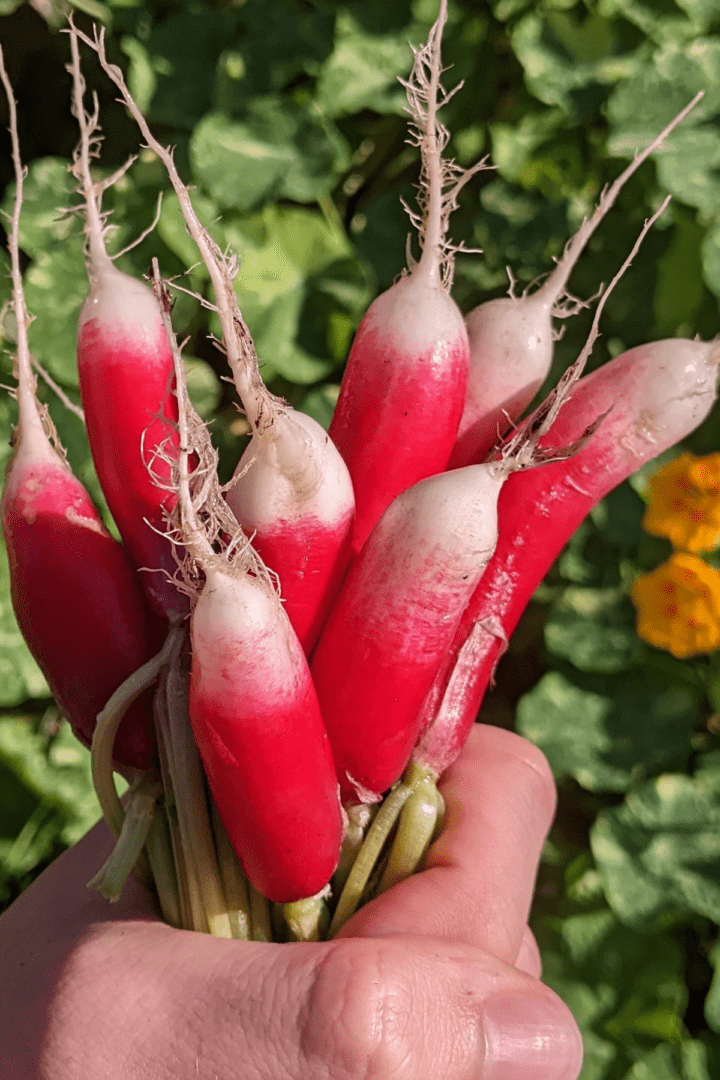
Radishes are a quick and rewarding plant perfect for beginner gardeners who want to get the
How to Grow Radishes
You will learn all the essential factors required to grow healthy and delicious radishes. We will discover the ideal timing and seasons for planting radishes, including tips for growing radishes in cooler months and warmer climates.
This post provides information on different radish varieties, their shapes, sizes, and flavors, helping you choose the right type for your preferences. Additionally, you will find guidance on soil preparation, spacing, watering techniques, pest and disease control, and harvesting radishes, as well as suggestions for enjoying the harvest through various culinary preparations.
Timing and Seasons
The ideal time to grow radishes is during the cooler months, either in spring or fall. Radishes prefer temperatures between 50°F and 65°F. Planting radishes in summer, when the weather’s hot and dry, will result in bitter and spicy-tasting radishes. If you live in a more southern area or a warmer climate, winter planting is the best option.
Varieties
If you want to purchase any of the following radish varieties, simply click on its name!
There are many different types of radishes, and each variety has a different shape, size, and taste. Some popular varieties include Watermelon, Purple Plum, White Icicle, and Easter Egg. When selecting the radish variety, consider the time it takes to mature and the flavor you prefer.
White Icicle radishes, for example, have an oblong shape and a milder taste compared to Purple Plum, which has a round shape and spicier taste. Another example, the daikon radish, takes longer to mature, as it is a larger variety.
Soil and Spacing
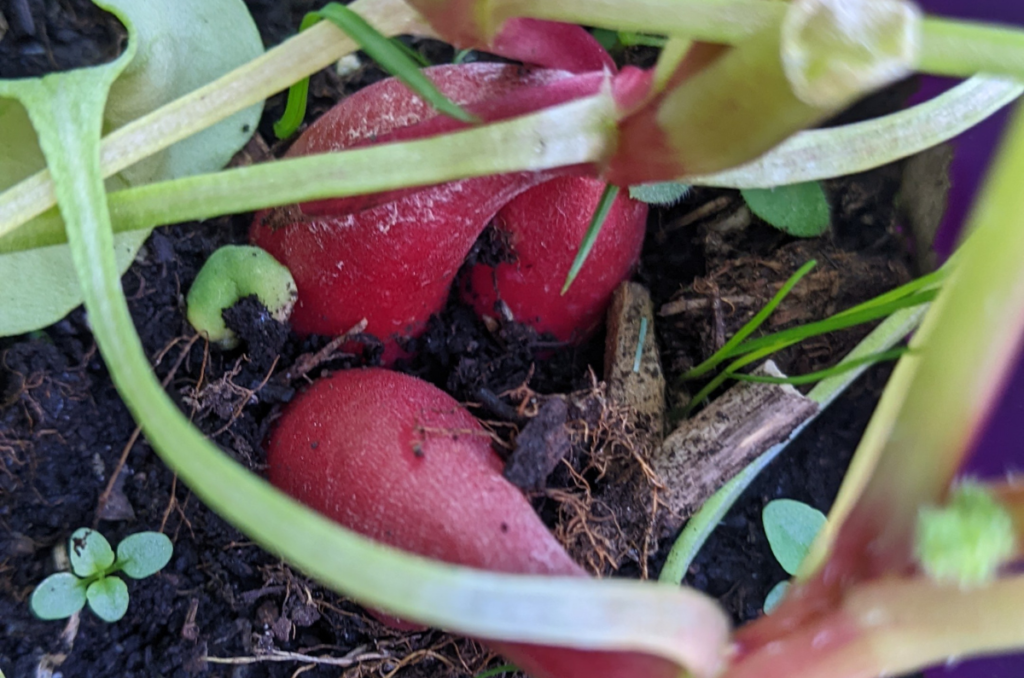
Radishes need well-draining soil with a neutral pH. Soil that retains too much moisture can lead to rotting, and acidic soil can stunt the growth of radishes. Make sure to clear your planting area of rocks and weeds and work in some compost or fertilizer high in phosphorus (for optimal root growth) to enrich the soil.
When planting radish seeds, the spacing should be around 2 inches between each seed. You can also try multi-sowing (shown above), which allows you to get more radishes out of the same space. Plant the seeds about half an inch deep and cover them with soil. Check out this YouTube Short where I sow radishes.
Watering
Radishes need to be kept moist, but the soil should not be waterlogged. Overwatering can lead to root-rot and reduced flavor. Water your radishes regularly, especially during dry spells.
A good way to test if your radishes need watering is to stick your finger about an inch deep into the soil. If it’s dry, it’s time to water. Check out our blog post about Watering Tips and Techniques to learn more.
Pest and Disease Control
While radishes are generally resistant to most pests and diseases, it’s still important to be vigilant and follow preventive measures to ensure a healthy crop. One common pest that can destroy radishes (and any other brassica) is the not-so-humble aphid, which will suck the sap out of the leaves and stems of your plants.
Protect your radishes by covering them with row covers or using organic insecticides if necessary. Rotating your radish crop yearly and practicing good garden hygiene can help prevent the buildup of diseases like root rot and powdery mildew. Regularly inspecting your plants for any signs of pests or diseases and taking appropriate action will help keep your radishes thriving.
Harvesting
Radishes mature quickly, usually within 30 to 40 days from planting. When the radishes are ready to harvest, you’ll be able to see the round or oblong shape poking out of the soil. Carefully pull them out of the ground by grasping the leaves and gently wiggling them loose.
If the roots are tough to pull out, you can use a garden fork to loosen the soil around them. Be careful not to damage the taproot.
Enjoying the Harvest
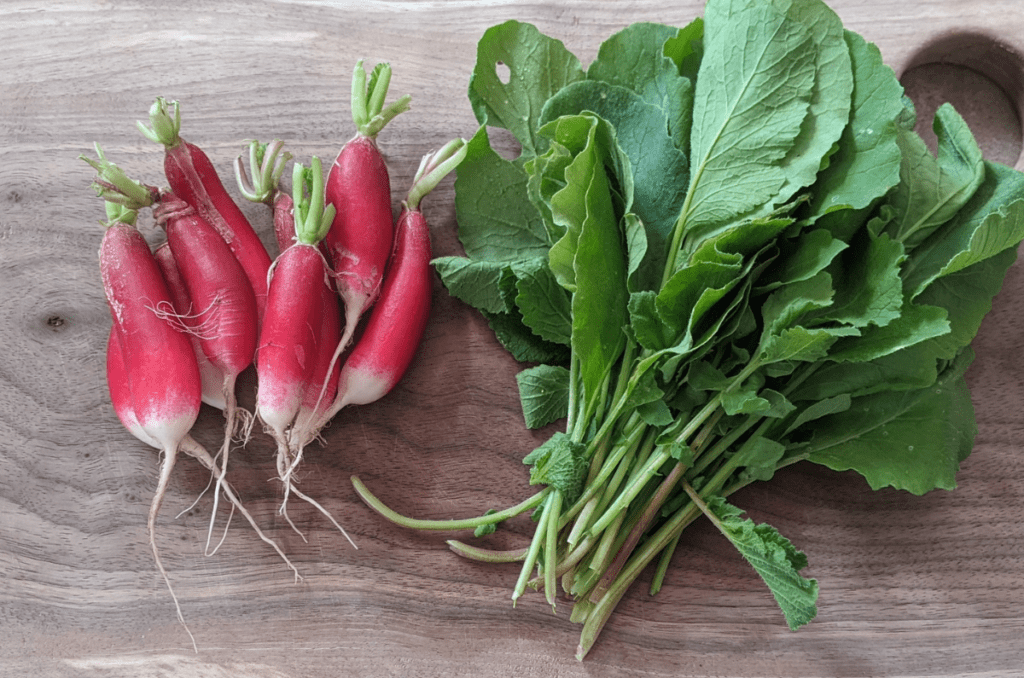
Once you’ve harvested your radishes, it’s time to enjoy them! Radishes can be eaten raw in salads, sliced as a snack, or pickled for more flavor. They’re also a great addition to sandwiches and tacos, adding crunch, color, and flavor.
Try roasting radishes with olive oil and garlic for a tasty side dish. My last radish harvest was more bitter than usual (I have to say that they actually tasted disgusting), probably due to the higher temperatures we received the past week. But, roasting can remove a lot of this bitterness, resulting in sweeter-tasting radishes.
The leaves are also edible, adding a kale-like flavor to salads, soups, and almost anything else.
Frequently Asked Questions
From seed to harvest, most radish varieties will be ready in only 30-40 days.
If you are pulling the entire radish plant out of the ground (which is most likely), then the plant is dead and will not regrow. However, if you are harvesting radishes just for their leaves, you can pick as many leaves as you want and they will regrow every time.
While radishes prefer to be in full sun, they can tolerate and grow perfectly in partial shade, especially if the temperature is higher.
Products
For all-purpose organic fertilizers, check out Arber.
For organic, non-GMO garden seeds, check out SeedsNow.
For a wide selection of garden plants, check out Nature Hills Nursery.
For gardening equipment, check out Bootstrap Farmer.
For gardening tools and supplies, check out VIVOSUN.
Conclusion
Growing radishes is an easy and rewarding experience that anyone can enjoy. With the right timing, soil, watering, and care, you can grow juicy and flavorful radishes in your own backyard. Whether you’re a seasoned gardener or a beginner, radishes are an excellent crop to add to your garden. Happy planting!
If you want to learn more about gardening, foraging, nature, and sustainability, check out The Real Gardener on Instagram, YouTube, and Pinterest.

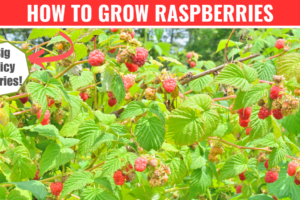
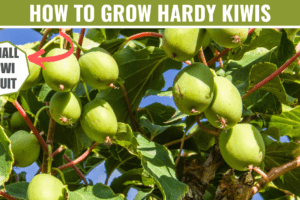
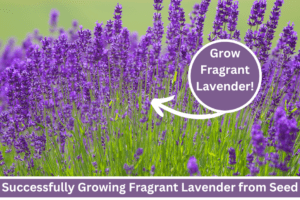
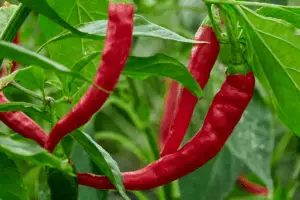
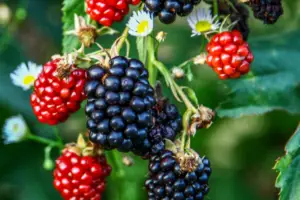
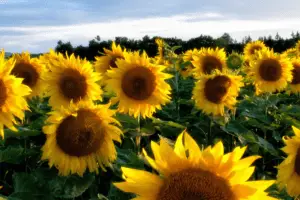
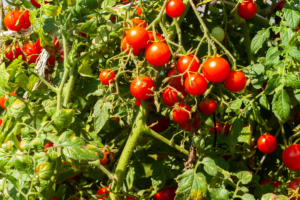
Leave a Reply